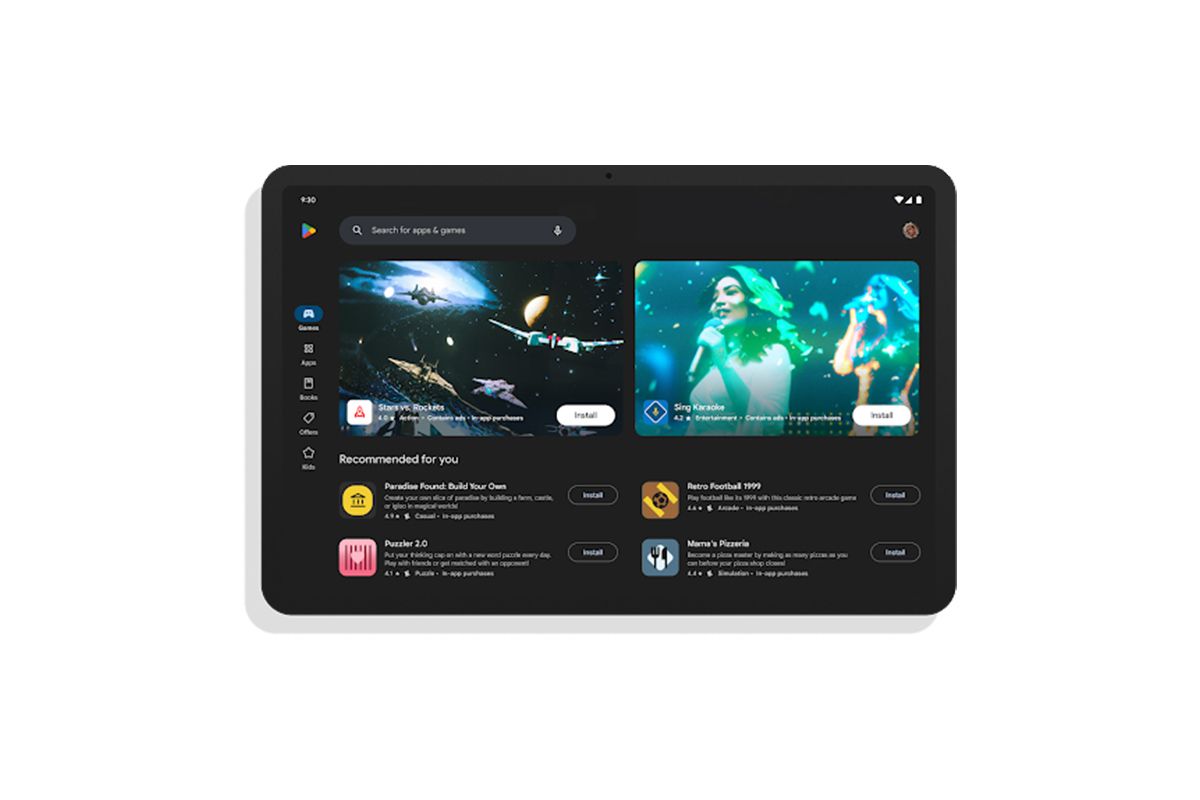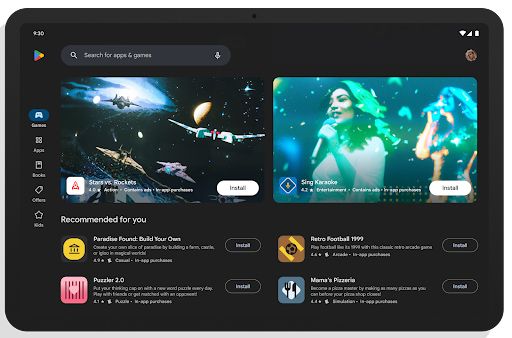Google announced plans to update over 20 first-party apps for Android tablets and foldables at this year's I/O developer conference. The company gave us an early preview of the Play Store redesign for tablets at the time, and it has now confirmed that it will roll out early next year.
Currently, the Google Play Store on tablets features a navigation bar on the left edge that gives you quick access to the Games, Apps, Offers, and Books pages. These pages include a few filters at the top followed by app carousels for various categories, like New & updated games, Games we are playing, Pre-registration games, etc. Each carousel features a few apps with their icons, Play Store ratings, prices, and the app size. To access the app's description, screenshots, and trailer videos, you have to tap on the app icon to head to its dedicated page.
Google plans to change this approach with the upcoming redesign, which will bring the app description, screenshots, and trailer videos right to the Apps and Games pages. As you can see in the attached screenshot, the Games page will feature a completely new layout with app descriptions and screenshots shown on the main screen.
In a post highlighting these changes to app developers, Google adds that the "goal of this content-forward approach is to better represent your app in the store and help users make install decisions." To make sure developers make the most of the updated UI, Google has also published a set of content quality guidelines with asset criteria to help developers "take advantage of richer formats in Play."
In addition to the new Play Store layout for tablets, Google has announced that the Play Store is also getting support for Chromebook-specific screenshots. Developers can now add up to eight 16:9 aspect ratio screenshots with dimensions of 1080-7690 pixels to app listings from the Play Console. Furthermore, the post also includes a few tips to help developers add great screenshots to their app's Play Store listings.
Source: Android developers blog


